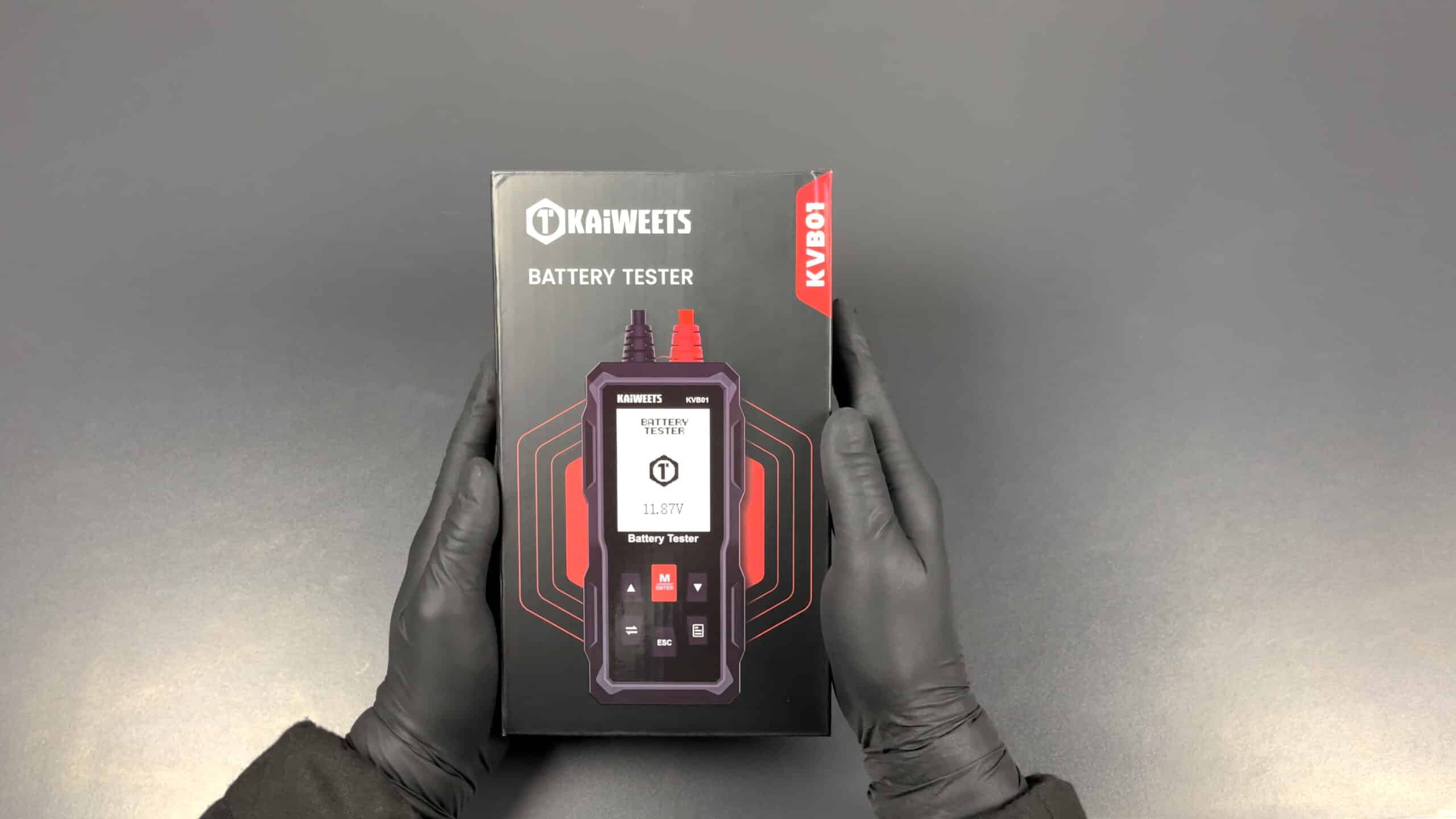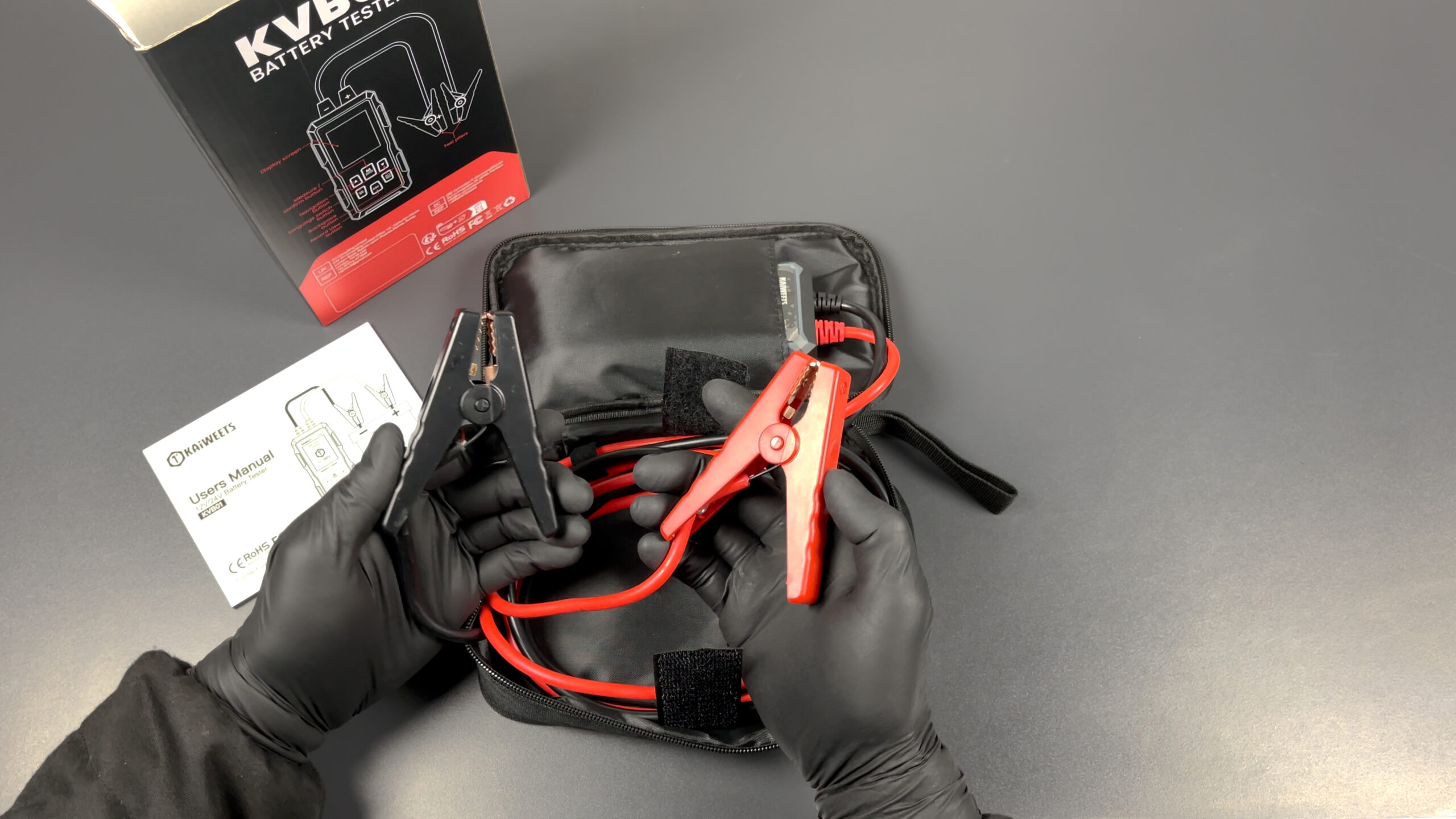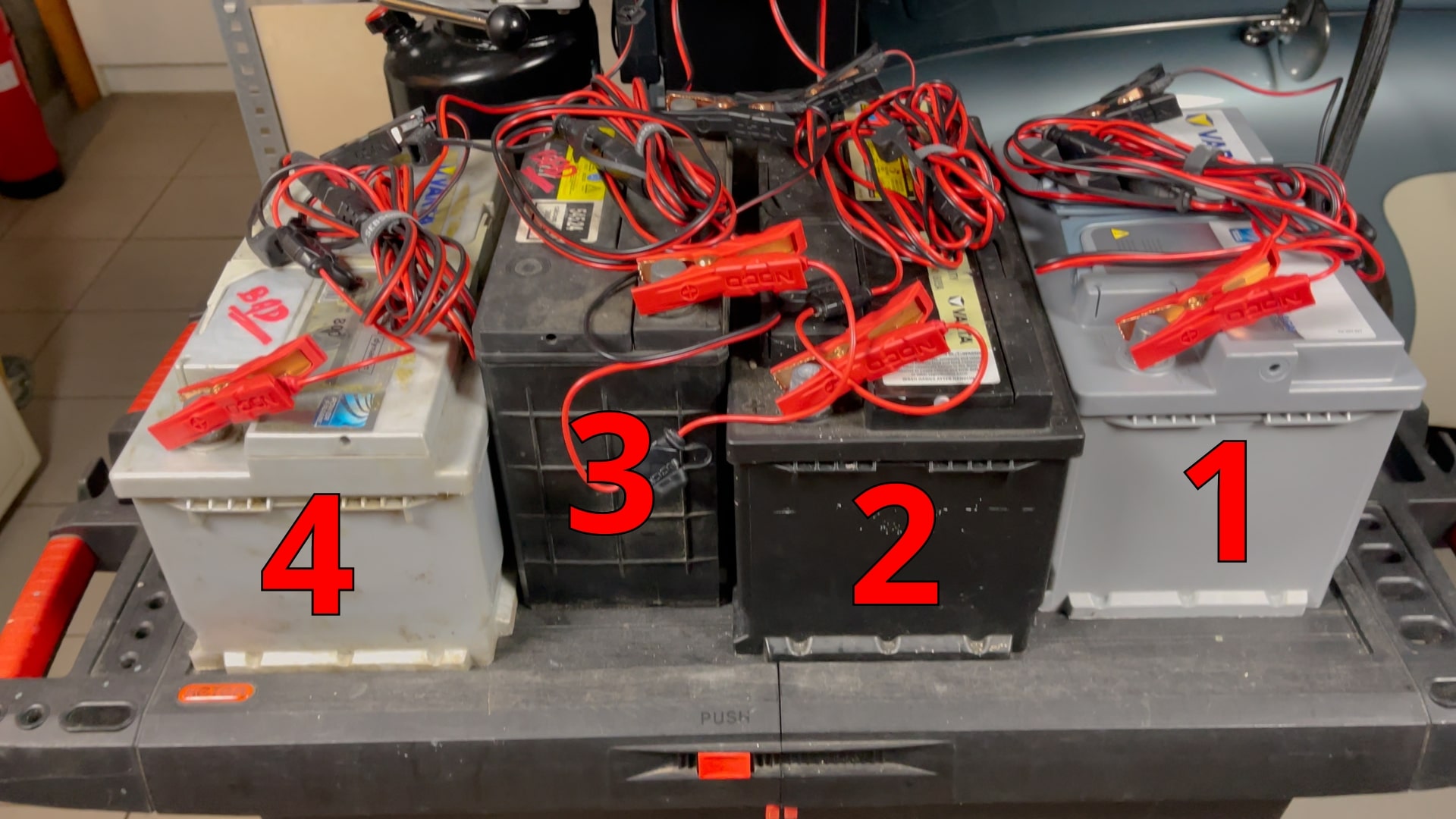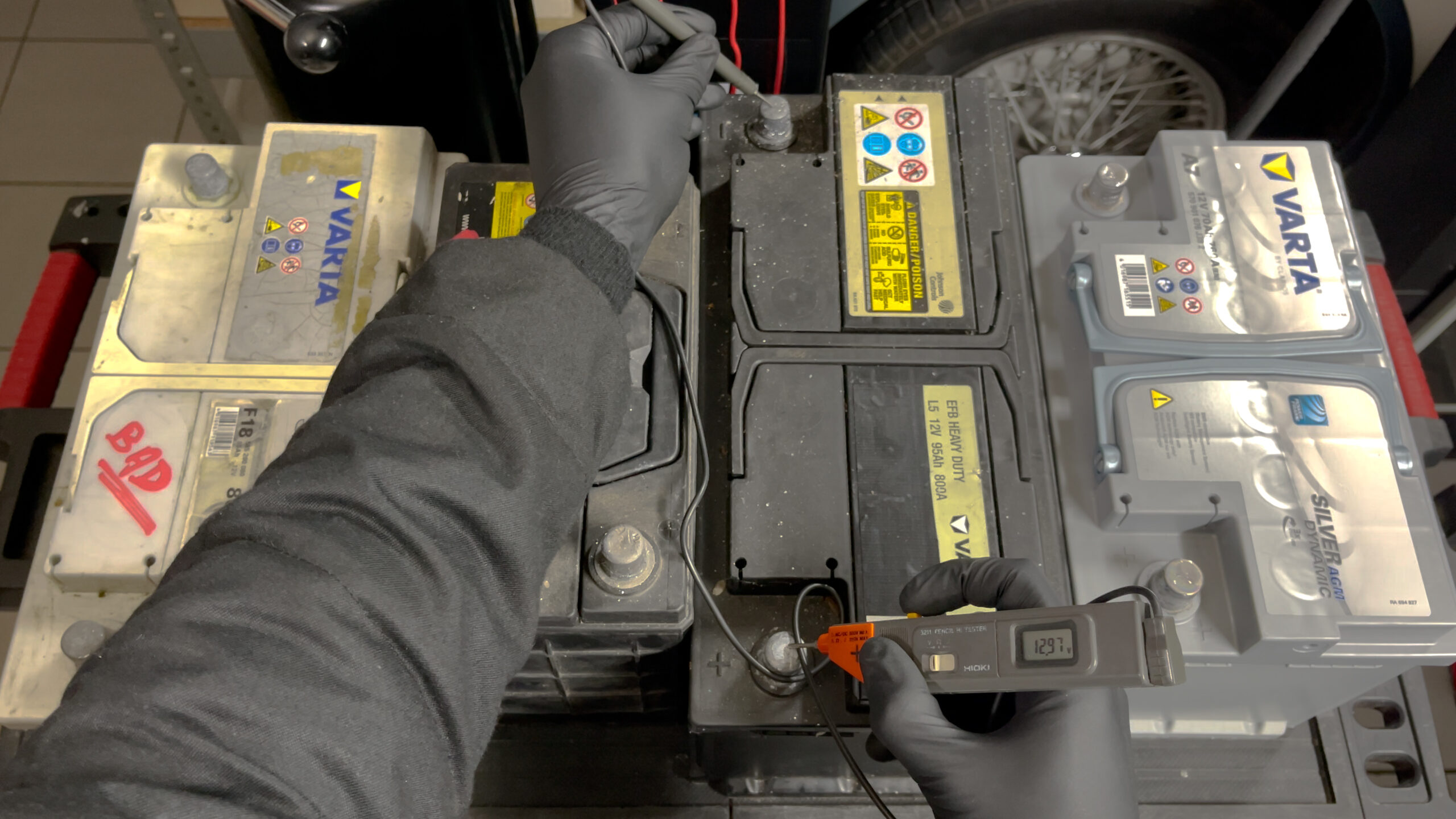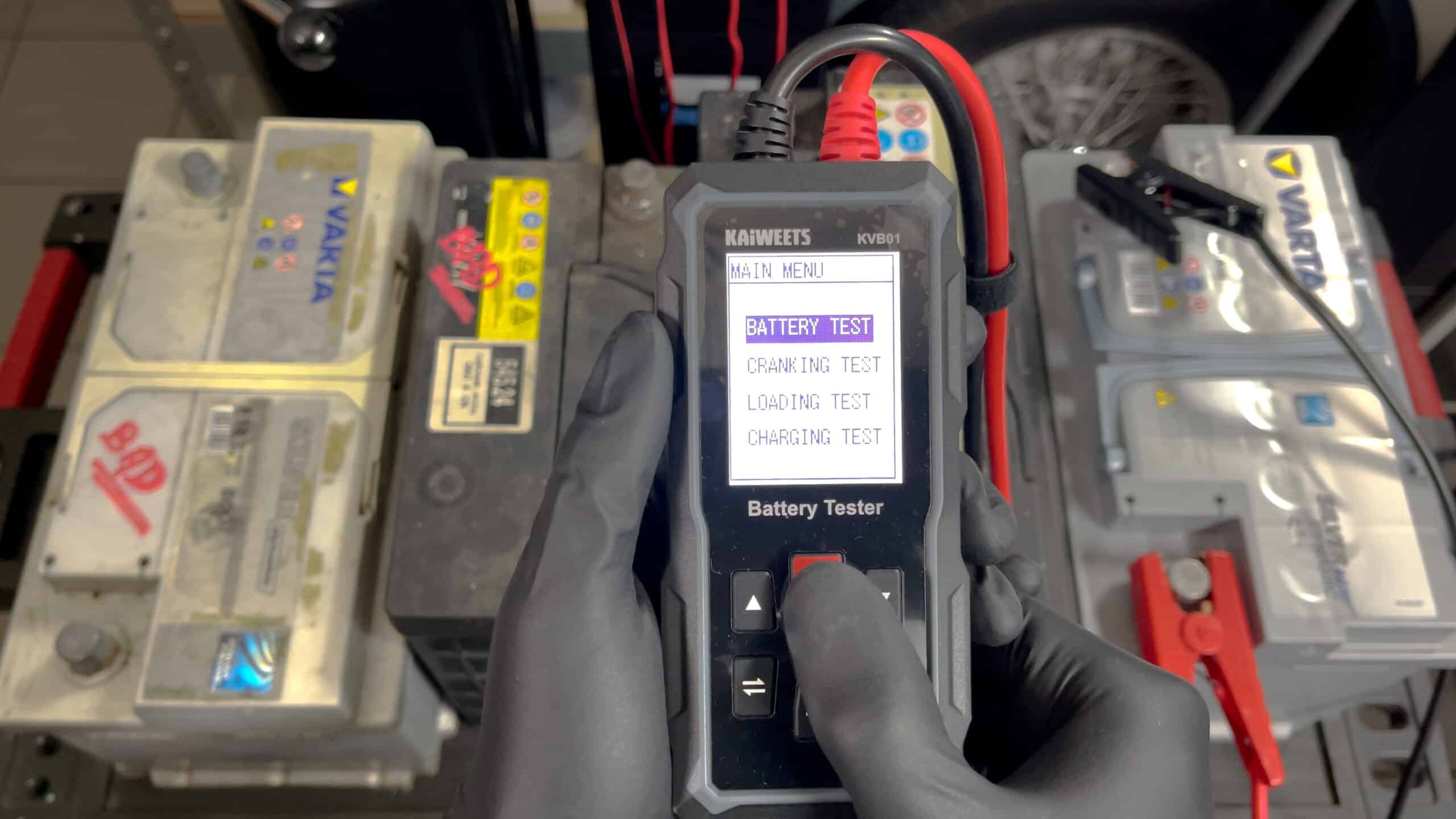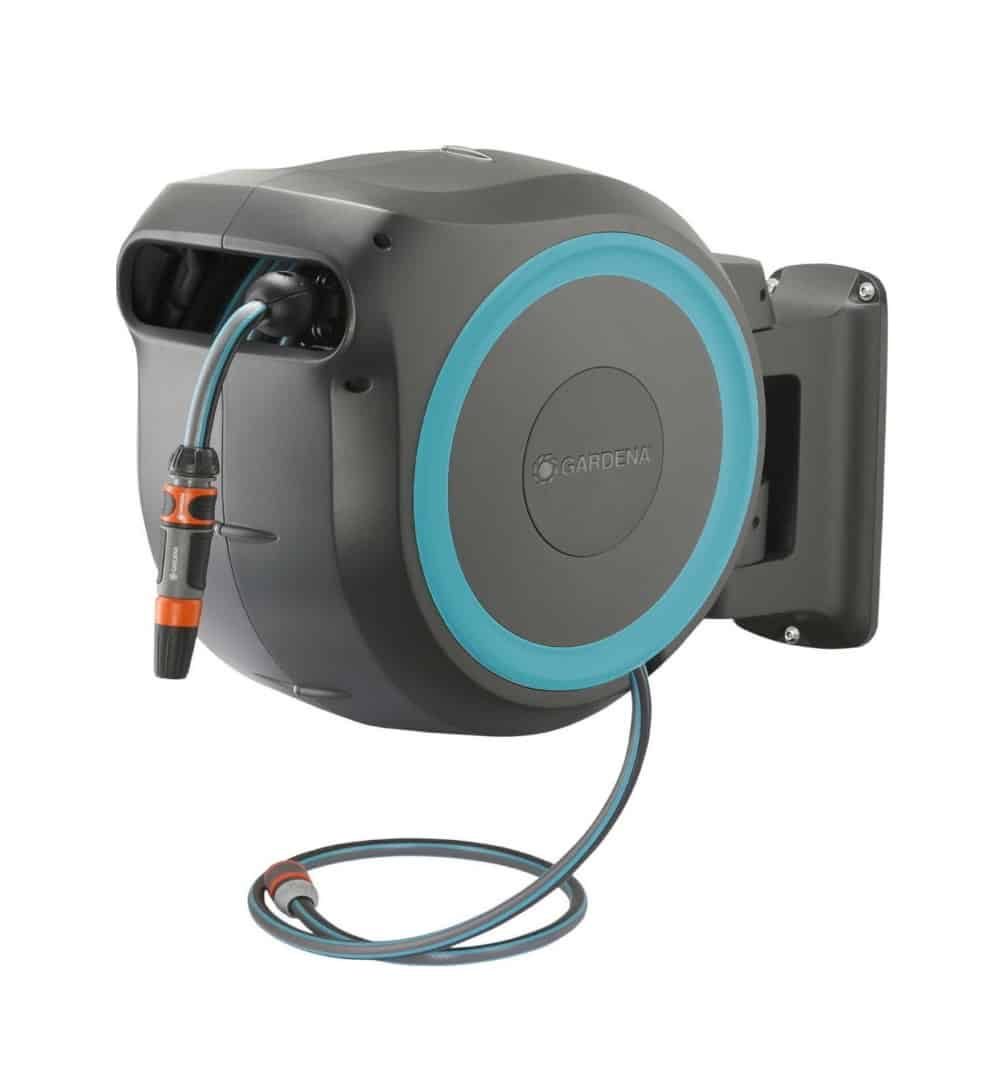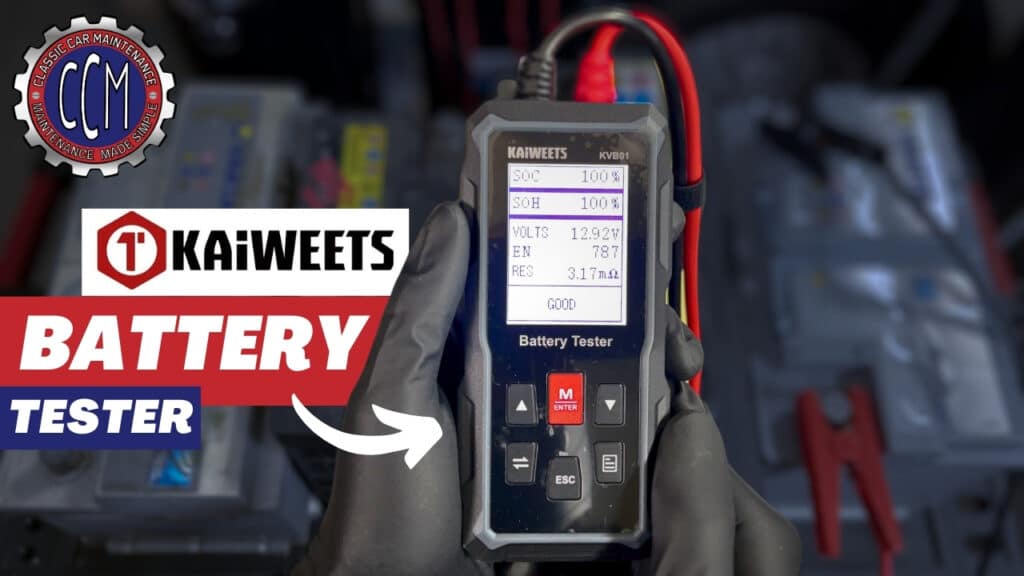
Searching the market for the coolest tools that can be used for vehicle maintenance and diagnostics, we came across the Kaiweets KVB101, a very affordable car battery tester from the popular Kaiweets brand. It’s supposed to do a full, reliable car battery and alternator test in a few minutes without breaking the bank.
It’s affordable, that’s for sure, but does it deliver? Only one way to find out: let’s do a full test!
|
What We Like
What We Don’t Like
Bottom Line The Kaiweets KVB01 is a great battery tester that offers reliable quality for an affordable price. It’s easy to use and it displays the condition the battery is in clearly and conclusively, even for people without technical expertise. It has an extra long cable that allows you to perform the tests all by yourself. |
|
Use Code “CCM15” for 15% off
|
What We Like
- Very affordable
- Reliable battery testing
- Easy to use
- Easy-to-read display
- Heavy Duty battery clamps with copper teeth
- Extra long cable
- Handy carrying bag for storage
What We Don’t Like
- No ripple test
Bottom Line
The Kaiweets KVB01 is a great battery tester that offers reliable quality for an affordable price. It’s easy to use and it displays the condition the battery is in clearly and conclusively, even for people without technical expertise. It has an extra long cable that allows you to perform the tests all by yourself.
Unboxing
The Kaiweets KVB01 is nicely packaged in a good looking box. Inside, there’s a transport bag and an instructions manual. The manual comes in 7 languages and tells you everything you need to know to use this device correctly.
Unzipping the transport bag, we can immediately see the tester and cables. They are firmly held in place by a velcro.
First Use and Settings
The battery clamps have a Heavy-Duty feel and are well-designed with copper teeth to ensure a good connection.
The battery clamp cables are 6ft 6” (2 meter) long, which is super long compared to other testers. This allows you to do the charging and cranking testing all by yourself as you can connect the clamps to the battery while taking the tester inside the vehicle with you.
The KVB01 sits in your hand comfortably. The casing feels solid and provides adequate protection. The cables are fixed to the tester and feel sturdy. The tester has 6 easy-to-read buttons: “M/Enter”, “Up”, “Down”, “Language”, “Esc” and “Data”. These pushbuttons have a quality feel and give nice feedback with a clicky sound. You can switch between 7 languages by pressing the bottom left button.
The LCD display is large enough for easy reading. When the battery test is finished, a number of parameters will be displayed on the screen. At the bottom of the screen, a final verdict will appear: “GOOD”, “NORMAL”, “REPLACE” or “RETEST AFTER CHARGING”, which is very user-friendly.
On the back of the tester, there’s a handy little table that indicates the amount of CCA different sized engines normally need.
Testing
Standalone Battery Testing
For our test setup we used 4 batteries in different stages of their life, ranging from dead to almost perfect condition. Before starting our test, we first fully charged our test batteries using our NOCO Genius 2×4.
- Battery 1 is pretty new and in perfect condition, and the continuous green light on our NOCO charging station indicates that it is fully charged.
- Battery 2 is our backup battery, which is a few years old but still in good condition. It holds its voltage and has enough power to crank a car with ease. It is also fully charged.
- Battery 3 is the most interesting. It’s old and bad but it holds its voltage and our charger says it charges fully. However, it does not have enough power to crank a car, no matter what our charger says. This makes this battery a very interesting test case, to see if the KVB01 detects this bad battery despite its normal voltage.
- Battery 4 is 10+ years old and completely dead and won’t hold a charge. Our NOCO charger doesn’t get beyond the first red charging stage, even if you charge it for a couple of days. It is bulging too, and when you touch the battery when it’s being charged, it feels a lot warmer compared to the other batteries. This is never a good sign and indicates very high internal resistance and/or dead cells.
First, we tested the batteries with an accurate multimeter. This gave us a reference, a benchmark to start from and compare with. A voltage test is a quick test you normally would do to check if the battery is okay or not.
Using an accurate multimeter only, these were the results:
- Battery 1 measured 12.97V, a perfect reading for a nearly-new battery, as expected.
- Battery 2 also measured 12.97V, which is a great reading too for a battery that is a few years old.
- Battery 3 even measured 13.59V, which would make you think that this is a perfectly healthy battery, but we know it isn’t.
- Battery 4 only measured 8.21V although it had been hooked up to our Noco charger for days. This was to be expected for a dead battery.
With the multimeter measurements as a comparison, we then tested the 4 batteries with the Kaiweets KVB01 battery tester:
The Kaiweets KVB01 is very simple to use: Hook up the battery clamps to the battery posts, and the battery tester turns on using the battery’s power. It will automatically display the battery’s voltage. This tester is very safe, it’s reverse polarity- and spark-protected.
The Kaiweets KVB01 measures the exact same voltage as our multimeter.
To start the battery test, connect the battery clamps to the battery, select the right voltage, and then select the type of test you want to perform. After selecting the battery test, you have to select the type of battery, the amps rating standard and the amount of amps indicated on the battery. Once you’ve entered all these parameters, then press “enter” and the device will do the rest.
The processing of the data will only take a few seconds. Then the tester will show you the battery’s state of charge (SOC), state of health (SOH), voltage, the amount of amps available and the battery’s internal resistance. If you don’t know what all that mumbo-jumbo means, you can just take a look at the bottom of the display to see if the battery is good or needs to be replaced. It will say “GOOD”, “NORMAL”, “REPLACE” or “RETEST AFTER CHARGING”.
Battery 1: As expected, the test results show this is a good battery. Its state of charge and health are both 100 percent, voltage is good and the amps value close to what is indicated on the battery. It has a low internal resistance, which also indicates that it is a healthy battery.


The device immediately sounds an alarm, indicating that it is a bad battery that needs to be replaced. Although the state of charge is 87%, the state of health is only 19%. The test shows the battery only has 160 amps remaining of the original 360 amps and that it has a high internal resistance, which isn’t good. The conclusion is that the Kaiweets battery tester wasn’t fooled by a good voltage reading and correctly identified this bad battery.
With a simple voltage test, there is no way to determine that this battery is bad, but the Kaiweets KVB01 battery tester immediately detected that this battery is bad and needs to be replaced.
Battery 4: This completely dead battery is bulging and gets hot when trying to charge it. After being hooked up to our NOCO charger for days, it still only reads 8.21V. This clearly indicates high internal resistance and some dead cells.
Although the battery tester appears to be able to perform the test despite the low voltage, when pressing “Enter” after selecting all the parameters, the device displays that the battery needs to be retested after charging. Because this battery has already been charged for several days without showing improvement, this result means it clearly is a bad battery, confirming what we already knew.
For the third test, we’ll compare the results from the Kaiweets KVB01 battery tester to an old school load tester.
The load test on the first battery gives the same results as the Kaiweets tester: it says it is a good and healthy battery.
The load test on the second battery also matches the battery tester results, once again correctly indicating it as a healthy battery.
The third battery should fail the load test because it is too weak to crank a car engine, yet the load tester shows a result right on the edge of “good” and “bad”. The conclusion is that the Kaiweets battery tester manages to give a much more accurate test result than an old-school load tester.
Once again, this confirms that the Kaiweets KVB01 produces reliable test results.
This device also has the ability to store multiple results. After performing a test, simply press the “save” button. The test results remain stored even after turning the device off. To view the collected data, simply press the save button and you’ll be able to see all the results you have stored.
In-Car Battery Cranking and Charging Test
For the 4th and final test, we’re testing the battery in our ‘98 Jeep Wrangler with our trusty multimeter and compare its test result to a battery test, cranking test and charging test using the Kaiweets KVB01.
A quick test with our multimeter indicates that the battery is healthy and fully charged. We already know from experience though, that this battery has ample power to crank our car.
To test the Kaiweets KVB01, we swiftly enter the battery’s parameters and complete the test. The BT100 confirms that this is a normal, healthy battery.
Next up is the cranking test. A big advantage of the Kaiweets battery tester is its super long cable. This allows you to take it inside the vehicle with you without needing help to perform this test, unlike with most other battery testers that have short cables.
Right after selecting the cranking test in the main menu, the KVB01 instructs us to start the engine. Immediately after starting the engine, the battery tester displays the test results. Once again, the battery tests normal with enough power to crank the engine. All these tests are really easy to perform, you just have to follow the instructions on the screen.
The next test is the “loading” (load) test. For this test, we’ll put a load on the battery and then increase the engine speed to between 2000 and 2500 RPM like instructed on the screen. For our load, we turn on the lights and rear window defogger. The RPM is increased and then we press “Enter”.
Once again, the Kaiweets KVB01 battery tester shows a normal result which indicates that the alternator is strong enough to perform under load.
Next is the charging test. Again, the instructions are easy and clear: Start the engine, increase the RPM between 2500 and 3000 and then press “Enter”. There is nothing more to it: easy instructions and fast results. The dynamic and maximum and minimum voltage are displayed, followed by a conclusion. Once more, the Kaiweets KVB01 indicates our battery is charging normally, which tells us that our alternator is working as it should.
The final battery check is with the old school load tester. This time to see if the results correspond with the Kaiweets battery tester. As expected, the battery also passes the old school load tester’s test.
These tests confirm that the Kaiweets KVB01 battery tester also performs an in-car battery cranking- and charging test reliably.
The Verdict
The Kaiweets KVB01 is a very affordable battery tester that gives a much more accurate result than just using a multimeter or old-school load tester. It is simple to use and easy to read. The rugged casing gives it a quality feel and the super long cables allow you to perform the tests all by yourself. It has sturdy battery clamps with copper teeth for optimal contact. This tester comes in a handy transport case too. The only small downside is that this device does not perform a ripple test as part of the charging and load test like some other battery testers. A ripple test gives even more detailed insight into the alternator’s health.
In conclusion, it’s a great device overall. If you’re looking for an affordable, easy-to-use and reliable battery tester to prevent you from getting stranded on the side of the road because of a bad battery or failing charging system, you should consider the Kaiweets KVB01.
Pros
- Very affordable
- Reliable battery testing
- Easy to use
- Easy-to-read display
- Heavy Duty battery clamps with copper teeth
- Extra long cable
- Handy carrying bag for storage
Cons
- No ripple test
Why You Should Trust Our Reviews And Content
All our website content and reviews are 100% unique, protected and based on our own thorough research.
They are the result of our hands-on testing, data analytics, expert consultation and customer review analysis, enhanced by our own extensive expertise.
We do not compromise: our focal point is always on you, our valued visitor.
Our website content and reviews are your unbiased, unsponsored tools to get the job done better and quicker, with less expense.
CCM is reader-supported. When you buy via links on our site, we may earn an affiliate commission at no cost to you. Learn more.



